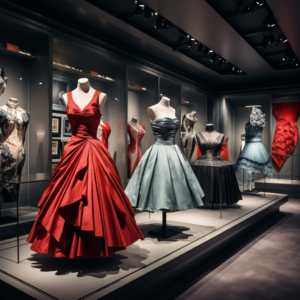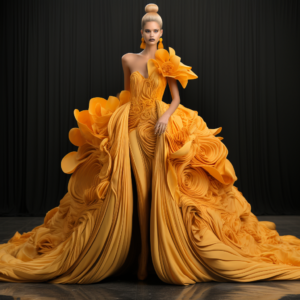A Brief Overview
The corset, a garment that once dictated the silhouette of women’s fashion, has experienced a fascinating evolution throughout history. From a standard component in women’s wardrobes to a relic of the past, the corset has recently been revived in contemporary fashion as a symbol of expression and empowerment. This article explores the history and transformation of the corset.
Origin
The earliest known use of the corset dates back to the Minoan civilization in Crete, around 2000 BC. Women of this society wore garments designed to emphasize a slender waist and full hips, an early indication of the use of corsets in fashion. Artwork from this period often depicts females in tight-fitting bodices, lending credence to the notion that corset-like garments were utilized to create a desired shape.
Ascend and Prime Days
The European Renaissance ushered in a new era for the corset. During this time, the garment gained prominence as an essential piece in a woman’s attire, with its ability to create the quintessential hourglass figure extremely sought after. Throughout the 16th century, advances in tailoring techniques facilitated the construction of increasingly rigid and structured corsets, reflecting the growing importance of this garment. As the popularity of the corset continued to rise, associated fashions followed suit, with voluminous skirts and gowns designed to complement the cinched waist provided by the corset.
The Corset Controversy
By the 19th century, the corset had become an integral part of women’s fashion, with millions of women around the world wearing corsets daily. However, the health implications of corsets began to surface, leading to controversy surrounding the garment. Physicians and health reformers warned of the potential dangers that could arise from the constant pressure placed on internal organs, often citing fainting spells, deformities, and respiratory issues as common ailments among corset wearers. Despite these concerns, the corset maintained its foothold in fashion, with women continuing to prioritize the desired silhouette that the garment provided.
The Fall
By the dawn of the 20th century, the corset’s dominance in fashion began to wane. The introduction of new synthetic materials facilitated the development of more comfortable and less restrictive undergarments, while social and political shifts redefined societal ideals of femininity and beauty. As women gained more rights and independence, the corset’s association with restraint and oppression became increasingly problematic, leading to its eventual decline in popularity.
The Revival
In recent years, the corset has experienced a resurgence in contemporary fashion, reinvented for modern tastes and values. With the rise of movements such as body positivity and female empowerment, the corset has been reimagined as a symbol of expression and self-confidence. No longer are they viewed as tools of oppression, but rather, they have evolved into garments that accentuate and celebrate the female form. Increasingly, corsets are being adopted by individuals as a means of self-expression, with the garment being utilized not only in high fashion but in alternative subcultures, such as the goth and steampunk communities.
Concluding Thoughts
Reflecting on the history of the corset, one can observe the ever-evolving ideals of beauty and the enduring nature of fashion pieces within society. Despite the garment’s complicated history and the controversy surrounding it, the corset remains an iconic symbol within the world of fashion, revered for its unique ability to accentuate and celebrate the female form. We encourage our readers to share their thoughts and insights regarding the history of the corset in the comments below and invite you to subscribe to our newsletter for more captivating explorations of the ever-changing world of fashion.


